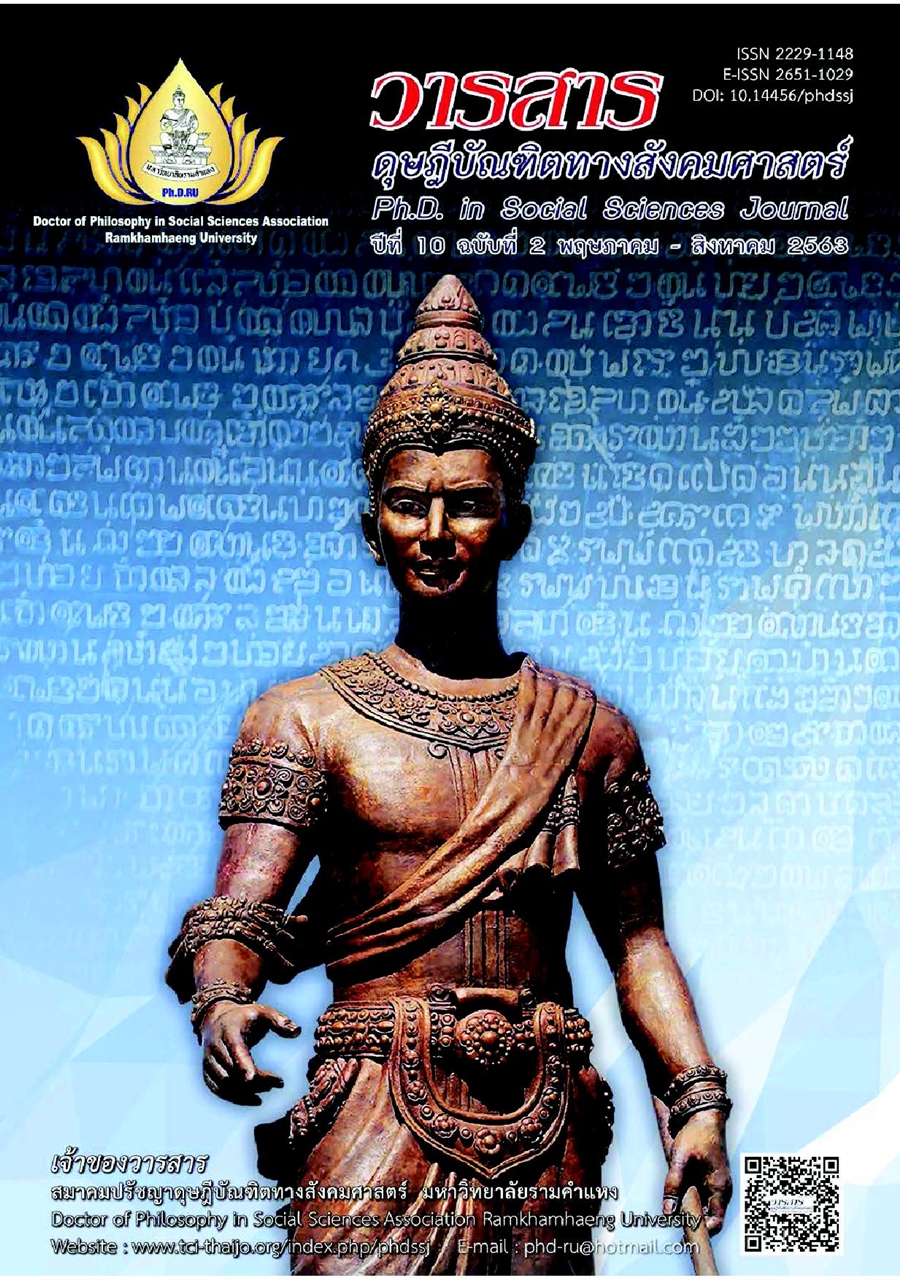The Effects of Managerial Accounting Data Quality and Managerial Accounting Information on Hotel Performance in the Cha-Am and Hua Hin Area
Main Article Content
Abstract
The purpose of this study is to explore the effect of managerial accounting data quality and managerial accounting information to the organization. This research uses both qualitative and quantitative methods. Data were collected by using an interview form to 55 accounting managers and administrators and questionnaire to 275 accounting employees of from 55 hotels. Qualitative data were analyzed using descriptive statistics and percentage techniques, and were explained in tables. Quantitative data were analyzed in terms of arithmetic mean and standard deviation. Hypothesis testing was conducted using Pearson’s correlation coefficient.
Finding are follows: Most of managers (≥70 percent) viewed that all of managerial accounting data quality and managerial accounting information had effect on the performance of organization. And accounting employees viewed that all aspects of managerial accounting quality data and managerial accounting information namely; data quality, usefulness, accuracy, accessibility, high quality information and managerial accounting information were vastly usable and had effect on work performance of organization at the statistically significant level of .05.
Article Details
Academic articles, research articles, and book reviews in the Ph.D. in Social Sciences Journal are author’s opinions, and not the publisher’s, and is not the responsibility of the Ph.D. in Social Sciences Journal Philosophy Association, Ramkhamhaeng University. (In the case that research is done on human, the researcher has to be trained in Ethics for Doing Research on Human Training and has to produce the evidence of the training).
References
Adams, D. A., Nelson, R. R., & Todd, P. A. (1992). Perceived usefulness, ease of use, and usage of information technology: A replication. Management Information Systems Quarterly, 16(2), 227-247.
Awadh, A. M., & Alyahya, M. S. (2013). Impact of organizational culture on employee performance. International Review of Management and Business Research, 2(1), 168-175.
Baines, A., & Langfield-Smith, K. (2003). Antecedents to management accounting change: A structural equation approach. Accounting, Organizations and Society, 28(7-8), 675-698.
Bizer, C. (2007). Quality-driven information fi ltering in the context of web-based information systems. Doctoral Dissertation of Philosophy, Freie Universität, Berlin, Germany.
Bledsoe, N. L., & Ingram, R. W. (1997). Customer satisfaction through performance evaluation. Journal of Cost Management, Winter, 43-50.
Bossuyt, P. M., Reitsma, J. B., Bruns, D. E., Gatsonis, C. A., Glasziou, P. P., & Other. (2003). Toward complete and accurate reporting of studies of diagnostic accuracy: The STARD initiative. American Journal of Clinical Pathology, 119(1), 18-22.
Bruggeman, W., & Slagmulder, R. (1995). The impact of technological change on management accounting. Management Accounting Research, 6(3), 241-252.
Choe, J. M. (2004). The relationships among management accounting information, organizational learning and production performance. The Journal of Strategic Information Systems, 13(1), 61-85.
Flamholtz, E. G., Das, T. K., & Tsui, A. S. (1985). Toward an integrative framework of organizational control. Accounting, Organizations and Society, 10(1), 35-50.
Funder, D. C., & West, S. G. (1993). Consensus, self-other agreement, and accuracy in personality judgment: An introduction. Journal of Personality, 61(4), 457-476.
Gonçalves, M. A., Moreira, B. L., Fox, E. A., & Watson, L. T. (2007). What is a good digital library?: A quality model for digital libraries. Information Processing & Management, 43(5), 1416-1437.
Guide, Jr. V. D. R. (2000). Production planning and control for remanufacturing: Industry practice and research needs. Journal of operations Management, 18(4), 467-483.
Huang, K.; Lee, Y. W., & Wang, R. Y. (1999). Quality information and knowledge. Prentice Hall.
Jelley, R. B., & Goffi n, R. D. (2001). Can performance-feedback accuracy be improved effects of rater priming and rating-scale format on rating accuracy. Journal of Applied Psychology, 86(1), 134-144.
Jonas, E., Schulz-Hardt, S., & Frey, D. (2005). Giving advice or making decisions in someone else’s place: The infl uence of impression, defense, and accuracy motivation on the search for new information. Personality and Social Psychology Bulletin, 31(7), 977-990.
Lennox, C. S. (1999). The accuracy and incremental information content of audit reports in predicting bankruptcy. Journal of Business Finance & Accounting, 26(56), 757-778.
Marius, C. D., Denisa, C. M., & Florina, B. R. I. (2012). Managerial accounting–a source of information for an effi cient management in SME. Procedia-Social and Behavioral Sciences, 62(1), 521-525.
Mendes, P., Bizer, C., Miklos, Z., Calbimonte, J. P., Moraru, A., & Other. (2012). D2 1: Conceptual model and best practices for high. Quality metadata publishing. Technical Report.
Nanni, A. J., Dixon, J. R., & Vollmann, T. E. (1992). Integrated performance measurement: Management accounting to support the new manufacturing realities. Journal of Management Accounting Research, 4(1), 1-19.
Nooghabi, M. Z., & Dastgerdi, A. F. (2016). Proposed metrics for data accessibility in the context of linked open data. Program, 50(2), 184-194.
Sawitri, D., Suswati, E., & Huda, K. (2016). The impact of job satisfaction, organization commitment, organization citizenship behavior (OCB) on employees’ performance. International Journal of Organizational Innovation, 9(2), 24-45.
Strong, D. M., Lee, Y. W., & Wang, R. Y. (1997). Data quality in context. Communications of the ACM, 40(5), 103-110.
Tombros, A., Ruthven, I., & Jose, J. M. (2005). How users assess web pages for information seeking. Journal of the American Society for Information Science and Technology, 56(4), 327-344.
Wang, R. Y., & Strong, D. M. (1996). Beyond accuracy: What data quality means to data consumers. Journal of Management Information Systems, 12(4), 5-33.
Wathen, C. N., & Burkell, J. (2002). Believe it or not: Factors infl uencing credibility on the web. Journal of the American Society for Information Science and Technology, 53(2), 134-144.
Yamane, T. (1973). Statistics: An introductory analysis (3rd ed.). Harper and Row.
Yang, Z., Cai, S., Zhou, Z., & Zhou, N. (2005). Development and validation of an instrument to measure user perceived service quality of information presenting web portals. Information & Management, 42(4), 575-589.
Zaveri, A., Rula, A., Maurino, A., Pietrobon, R., Lehmann, J., & Other. (2013). Quality assessment methodologies for linked open data. Submitted to Semantic Web Journal, 1, 1-5.


